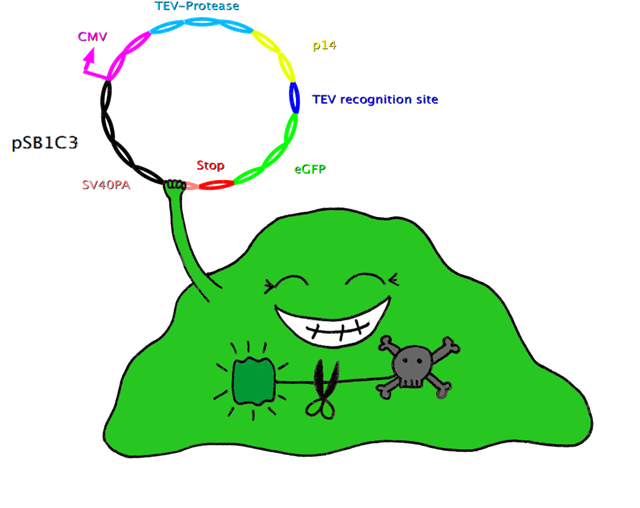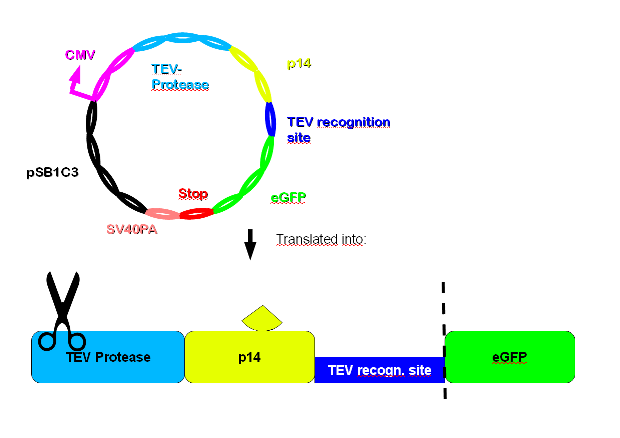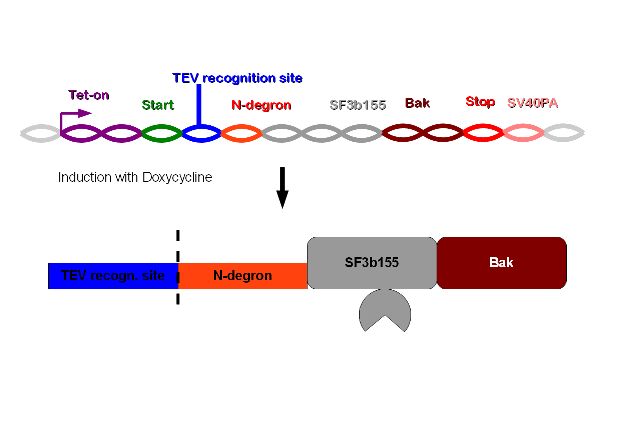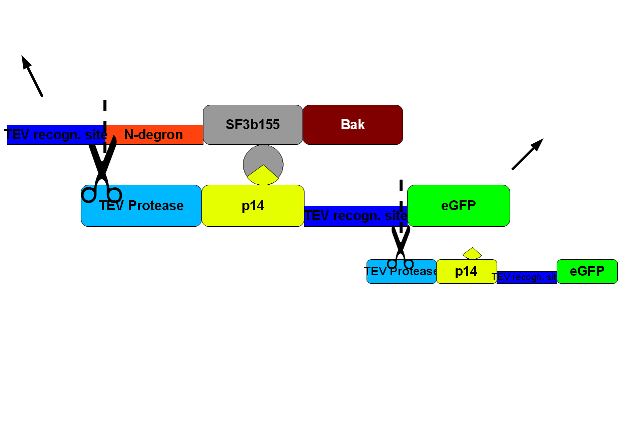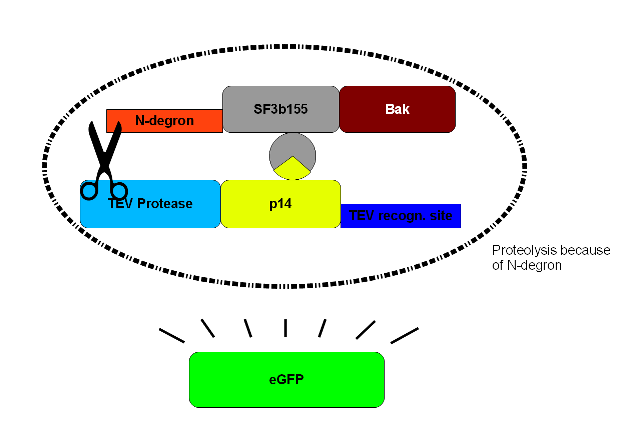Team:LMU-Munich/Cut'N'survive
From 2010.igem.org
| Line 1: | Line 1: | ||
{{:Team:LMU-Munich/Templates/Page Header}} | {{:Team:LMU-Munich/Templates/Page Header}} | ||
[[Image:cnsZelle.png|300px|Logo|right]] | [[Image:cnsZelle.png|300px|Logo|right]] | ||
| + | |||
| + | |||
| + | |||
| + | |||
| + | |||
| + | ==Cut'N'Survive System== | ||
| Line 17: | Line 23: | ||
| - | |||
In this system, the apoptosis triggering protein Bak is controlled by the Tet-on system for inducible apoptosis. Bak can be degraded when the target gene is successfully expressed, therefore ensuring the survival of the wanted cells. Bak is combined with a certain interacting protein p14*, TEV-protease recognition site and N-Degron. This construct should be stably integrated into the cell line genome. The target plasmid consists of eGFP as target gene, another TEV-protease recognition site, the interaction partner of p14* and TEV-protease. When the target plasmid is expressed, the interaction proteins bring the TEV-protease together with its recognition site; TEV cuts Bak, together with N-Degron, free from the rest of the protein complex, where N-Degron with its free N-terminal acts as degradation signal of protease in the cells. Thus this system enables selection of cells expressing the target gene while the cells not transfected undergo induced apoptosis. | In this system, the apoptosis triggering protein Bak is controlled by the Tet-on system for inducible apoptosis. Bak can be degraded when the target gene is successfully expressed, therefore ensuring the survival of the wanted cells. Bak is combined with a certain interacting protein p14*, TEV-protease recognition site and N-Degron. This construct should be stably integrated into the cell line genome. The target plasmid consists of eGFP as target gene, another TEV-protease recognition site, the interaction partner of p14* and TEV-protease. When the target plasmid is expressed, the interaction proteins bring the TEV-protease together with its recognition site; TEV cuts Bak, together with N-Degron, free from the rest of the protein complex, where N-Degron with its free N-terminal acts as degradation signal of protease in the cells. Thus this system enables selection of cells expressing the target gene while the cells not transfected undergo induced apoptosis. | ||
Revision as of 14:26, 25 October 2010
In this system, the apoptosis triggering protein Bak is controlled by the Tet-on system for inducible apoptosis. Bak can be degraded when the target gene is successfully expressed, therefore ensuring the survival of the wanted cells. Bak is combined with a certain interacting protein p14*, TEV-protease recognition site and N-Degron. This construct should be stably integrated into the cell line genome. The target plasmid consists of eGFP as target gene, another TEV-protease recognition site, the interaction partner of p14* and TEV-protease. When the target plasmid is expressed, the interaction proteins bring the TEV-protease together with its recognition site; TEV cuts Bak, together with N-Degron, free from the rest of the protein complex, where N-Degron with its free N-terminal acts as degradation signal of protease in the cells. Thus this system enables selection of cells expressing the target gene while the cells not transfected undergo induced apoptosis.
For more details of the functional principle, please click: Cut'N'Survive Functional Principle


![]()
![]()







![]()
![]()

![]()
Cut'N'Survive System
![]()
![]()

 "
"
